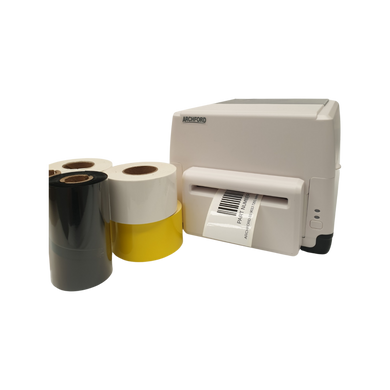1. Barcode Labels: An Introduction to Efficiency
Barcode labels stand as the cornerstone of modern inventory management systems. These small, yet mighty, labels contain encoded information that helps businesses streamline processes, enhance accuracy, and boost efficiency. In this section, we delve into the basics of barcode labels and their pivotal role in various industries.
In today’s fast-paced world, businesses are constantly seeking ways to optimize operations. Barcode labels offer a simple yet powerful solution to track and manage inventory seamlessly. From retail stores to warehouses, the application of barcode labels spans across diverse sectors, driving productivity and minimizing errors.
2. The Evolution of Barcode Labels: From Conception to Innovation
The journey of barcode labels traces back to the 20th century when Bernard Silver and Norman Joseph Woodland conceptualized the idea of encoding data in a visually readable format. Since then, barcode technology has undergone significant advancements, evolving from linear barcodes to two-dimensional ones, such as QR codes.
The evolution of barcode labels has been marked by continuous innovation, with each iteration bringing forth enhanced capabilities and efficiency. Today, barcode labels play a vital role not only in inventory management but also in asset tracking, supply chain logistics, and product authentication.
3. Understanding Barcode Label Types: Decoding the Diversity
Barcode labels come in various types, each tailored to specific applications and requirements. From UPC barcodes used in retail to Code 128 barcodes for shipping and logistics, understanding the different types is crucial for implementing an effective inventory management system.
4. Benefits of Barcode Labels: Enhancing Operational Efficiency
The adoption of barcode labels offers a myriad of benefits for businesses, ranging from improved inventory accuracy to accelerated check-out processes. Let’s explore some of the key advantages:
- Streamlined Operations: Barcode labels automate data capture processes, reducing the need for manual entry and minimizing errors.
- Real-time Tracking: With barcode technology, businesses can track inventory movements in real-time, enabling better decision-making and resource allocation.
- Enhanced Accuracy: Barcode scanning ensures accuracy in inventory counts and reduces the risk of human error, leading to improved stock management.
- Improved Productivity: By simplifying tasks such as stocktaking and order fulfillment, barcode labels optimize workflow efficiency, allowing employees to focus on value-added activities.

5. Implementing Barcode Labels: Best Practices for Success
While barcode labels offer immense potential, their effective implementation requires careful planning and execution. Here are some best practices to maximize success:
- Choose the Right Barcode Type: Selecting the appropriate barcode symbology based on your industry and application is crucial for seamless integration and readability.
- Invest in Quality Printing: Ensure high-quality printing of barcode labels to prevent smudging or fading, which can hinder scanning accuracy.
- Train Staff Effectively: Provide comprehensive training to employees on barcode scanning procedures and troubleshooting techniques to minimize errors and downtime.
- Integrate with Existing Systems: Integrate barcode technology seamlessly with existing inventory management systems to leverage its full potential and avoid compatibility issues.
6. Overcoming Challenges: Addressing Common Concerns
While barcode labels offer numerous benefits, they also pose certain challenges that businesses must address:
- Barcode Damage or Degradation: Environmental factors or mishandling can damage barcode labels, leading to scanning errors and data inaccuracies.
- Compatibility Issues: Incompatibility between barcode formats or scanning devices may hinder interoperability and data exchange, requiring additional resources for resolution.
- Cost Considerations: While barcode technology offers long-term cost savings through improved efficiency, the initial investment in equipment and software may pose a financial barrier for some businesses.
FAQs (Frequently Asked Questions)
How do barcode labels improve inventory management? Barcode labels automate data capture processes, reducing manual entry errors and enabling real-time tracking of inventory movements.
What types of barcode labels are commonly used in retail? In retail, UPC (Universal Product Code) barcodes are widely used for product identification and inventory management.
Can barcode labels be customized for specific applications? Yes, barcode labels can be customized with unique identifiers or additional data fields to meet the specific requirements of different industries or applications.
How durable are barcode labels? barcode labels are designed to withstand various environmental conditions, but factors such as exposure to extreme temperatures or chemicals may affect their durability.
Are barcode labels compatible with existing inventory management systems? Yes, barcode technology can be seamlessly integrated with existing systems through compatible software and hardware solutions.
What are the potential drawbacks of barcode labels? barcode labels may suffer from damage or degradation over time, leading to scanning errors or data inaccuracies if not properly maintained.
Conclusion
Barcode labels have revolutionized the way businesses manage inventory, offering unparalleled efficiency and accuracy. By leveraging barcode technology effectively, organizations can streamline operations, enhance productivity, and stay competitive in today’s dynamic marketplace.




